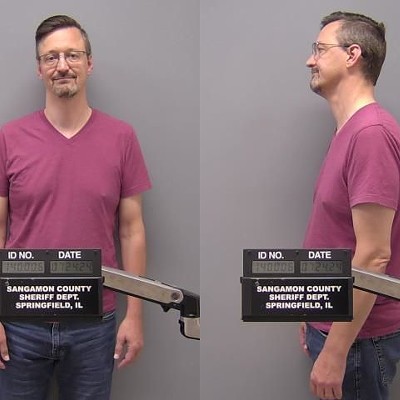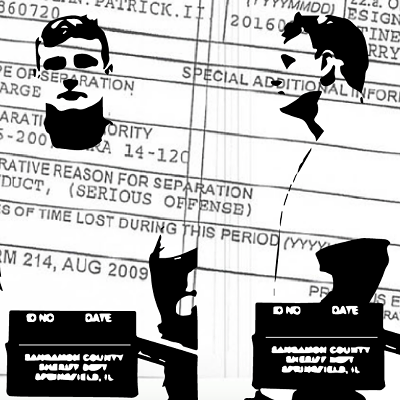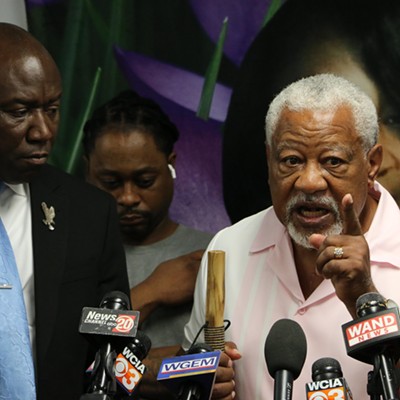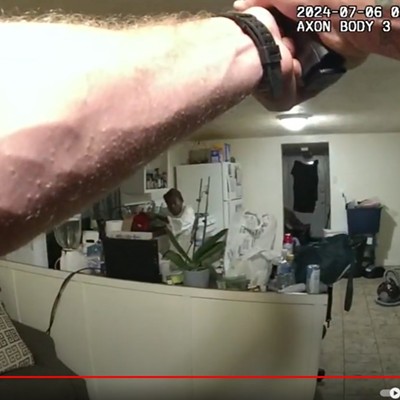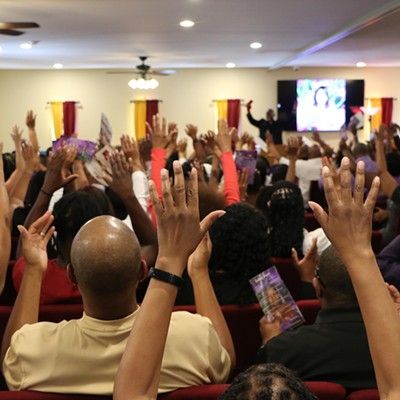Beginning at age 10, Nathan Jones accompanied his father, an Effingham optometrist, on medical mission trips to Honduras.
As a young adult, he flew on helicopters to care for car-crash victims during residency training in Peoria on his path to becoming an emergency medicine physician.
In recent years, he has helped save lives in Springfield Memorial Hospital's emergency department.
And this summer, he and his problem-solving personality will go out of this world – figuratively – for what will be a year-long simulation of what it's like to live on Mars.
Jones, a 40-year-old married father of three children, was selected by NASA from thousands of applicants to be on the first four-member crew in a series of missions known as the federal agency's Crew Health and Performance Exploration Analog.
He will leave his family in Springfield this week for about a month of training before his 378-day mission begins inside Johnson Space Center in Houston. He will remain physically apart from his family the entire time, though he will be able to communicate by video and phone.
"I've always been more of like a tech nerd," Jones, 40, told Illinois Times before his scheduled departure this week for Texas. "My kids say that I can fix anything, like most household appliances, a lawn mower and a broken snow blower that I bought, took it apart and repaired it, just for fun."
Jones said he wanted to take part in the NASA simulation for "the chance to explore and to get to contribute the way that we are. It's going to have a pretty big impact on the future of space exploration."
Subjecting himself to the real-life challenges that could face people on future missions to Mars intrigues him.
A private pilot, Jones said he previously applied to be part of NASA's astronaut corps. He wasn't selected and hasn't decided whether he will apply again. His interest in NASA was rekindled during a visit to Kennedy Space Center in 2020 while he and his family were on vacation in Florida. He later read online about the three simulation missions, scheduled for 2023, 2025 and 2026.
NASA says on its website that the missions will allow the agency to "study how highly motivated individuals respond under the rigor of a long-enduring, ground-based simulation."
The simulations will be part of research to "develop methods and technologies to prevent and resolve potential problems on future human space flight missions to the moon and Mars," according to the website.
NASA hasn't outlined any timeline for a manned mission to Mars – a journey of six months in space each way.
Planning for moon missions is well underway. There was a successful uncrewed Artemis 1 lunar orbital mission in late 2022. A crewed Artemis 2 lunar flyby is scheduled for November 2023 – the first manned trip to the moon in more than 50 years – followed by an Artemis 3 crewed moon landing in 2025.
Grace Douglas, lead scientist for NASA's advanced food technology research effort at Johnson Space Center, said in a statement that the simulated missions are "critical for testing solutions to meet the complex needs of living on the Martian surface. Simulations on Earth will help us understand and counter the physical and mental challenges astronauts will face before they go."
In this year's mission simulation, Jones and his three fellow crew members will live and work in a 1,700-square-foot module, called Mars Dune Alpha, that was constructed using 3D printing. It's a technology that NASA spokesperson Anna Schneider said may be used when as-yet-unscheduled missions to Mars begin.
"The habitat will simulate the challenges of a mission on Mars, including resource limitations, equipment failure, communication delays and other environmental stressors," the NASA website says. "Crew tasks may include simulated spacewalks, scientific research, use of virtual reality and robotic controls, and exchanging communications."
The habitat won't attempt to simulate the difference in gravity on Mars, which is one-third of Earth's gravity and the next and fourth planet away from the sun.
But simulated delays in communications between Mars and Earth will come into play, Jones said, noting that radio messages traveling at the speed of light can take up to 22 minutes between the two planets.
For comparison, communications between Earth and the International Space Station are almost instantaneous, and the delay between Earth and the moon is slightly more than a second.
Jones, a graduate of Southern Illinois University School of Medicine and an adjunct assistant professor of emergency medicine at SIU, will be designated as a medical officer on this year's crew.
The other three members selected include a man and two women from other parts of the country. There is a research scientist, a structural engineer and an advanced-practice registered nurse. There are two backup crew members – an engineer and a microbiologist.
Crew members for the next two mission simulations haven't been chosen yet.
While on leave from his job with Mid-America Emergency Physicians, Jones said he will be compensated by NASA, but he wouldn't elaborate on the amount, and NASA didn't respond to a request for details about compensation and the simulation program's overall cost to the federal government.
Being away from family in Springfield for a year will be a challenge, both Jones and his wife, Kacie, said.
"We know it's going to be difficult," said Kacie Jones, a registered dietitian and full-time stay-at-home mom to three boys, ages 9, 11 and 13.
"But the impact will go on longer than our hardship. And the boys (will) think their dad is pretty amazing."
Nathan Jones chimed in, "They already do." Adding the title of simulated astronaut to Jones' title made it seem to them like he was "the best dad ever," he said.
Dean Olsen is a senior staff writer for Illinois Times. He can be reached at [email protected] or 217-679-7810.




